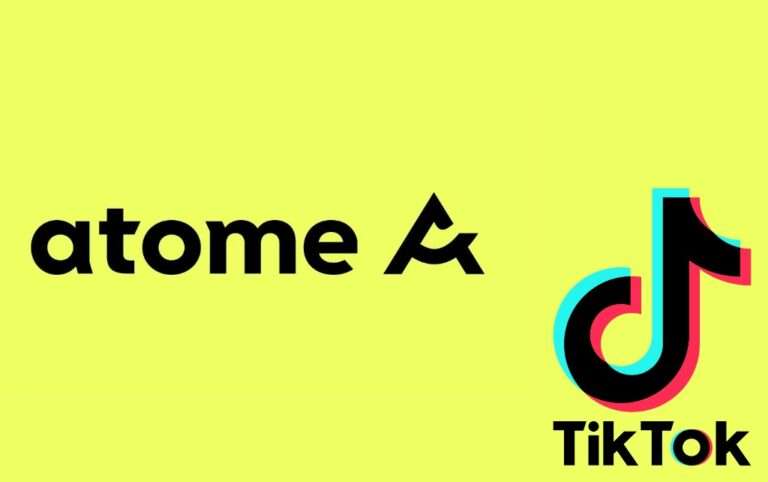Is your business still on the sidelines about investing in TikTok marketing?
If you’ve turned on the news recently, you’ve probably heard of TikTok and TikTok for Business. Indeed, the app is so popular that it has been making waves not only in the cultural sphere but in the political world as well.
This sort of media hubbub would never come to fruition if TikTok weren’t by and large the hottest new social media platform around. If even the government is taking notice, businesses should too.
Luckily, the launch of TikTok for Business has opened the playing field for businesses. With a slew of new features designed to increase engagement for brands, now is the perfect time to take a deep dive into this new platform and see what it can do for your company.
Even though more and more brands are jumping on TikTok, the competition is still fairly slim. Getting on the platform now is a great opportunity to be an early adopter of a potentially market-changing tool.
In this article we’ll help you
- better understand why TikTok is such a no-brainer for marketers,
- develop a TikTok marketing strategy, and
- provide you some examples of brands to inspire you!
5 Reasons You Should Be Using TikTok Marketing for Business
Let’s first look at the 5 reasons that TikTok should be in every business’s marketing toolbox. We’ll cover ads, different types of content, and some of the idiosyncrasies that make the platform unique.
1. TikTok Influencers
Influencer marketing has been around for a while now. If you don’t already know what it is, here’s a quick primer: you get in touch with an Instagram influencer who has a sizeable following and pay them to post about your products.
This type of marketing is particularly effective because it comes across more like a recommendation from a friend than as an advertisement. It instills trust in the viewer and makes them more likely to buy.
TikTok influencer marketing takes this to a whole new level. While Instagram marketing is still effective, the platform has been inundated with brands trying to take advantage of the strategy. As a result, there’s a growing number of Instagrammers who just tune out sponsored posts in the same way they’d tune out any other advertisement.
TikTok, on the other hand, is a new platform that is far less salesy. Because it hasn’t been as widely adopted by businesses, it retains more of the personalized flair that Instagram had before it became so commonly used for marketing.
Plus, if your products appeal largely to a younger demographic (13 to 24), TikTok is a perfect fit. A whopping 69% of all users on TikTok are between 13 and 24, with 27% between 13 and 17 and 42% between 18 and 24. So, if you’re trying to reach this demographic, TikTok is a golden ticket.
Overall, the hardest part of getting into TikTok influencer marketing is simply finding the right influencers for your brand. As powerful as TikTok marketing is, you still need to make sure the person you pick is in the right niche — you probably wouldn’t want to use a male fitness influencer to market a new women’s fitness program, for example.
To find an influencer, you can either search around on the platform yourself or use a tool like Influence Grid. Influence Grid helps you sort through influencers by providing information on their stats, including their follower count, views per video, and likes per video. This can help you get a better idea of the types of results you can expect with specific influencers.
2. TikTok Ads
TikTok ads are a relatively new addition to the platform. They mark TikTok’s entry into the ad space as a direct competitor to Snapchat and Instagram. Overall, TikTok ads are quite similar to other paid social media ads, but they do have some quirks that marketers should be aware of.
There are five types of ads you need to be aware of:
- In-Feed Ads
- Brand Takeovers
- TopViews
- Branded Hashtag Challenges
- Branded Effects
Now, before we get into the differences between each of these, it’s important to note that paid TikTok ads are more expensive than ads on most other social media platforms. While you can run a Facebook or Instagram ad campaign with an investment of just $20, the minimum cost to run an ad campaign with TikTok for Business is currently $50, which has come down from its previous $500.
In-Feed Ads
TikTok’s in-feed ads are analogous to the ads you see between Instagram stories. When a user is flipping through their feed, one of these ads will show up eventually.
One of the best features of in-feed ads is that you can make them pretty much indistinguishable from regular content if you want to, as the example below illustrates. However, you also have the ability to add multiple CTAs and upload videos with intricate motion graphics if that suits your strategy better. Overall, they allow for a lot of creativity.
Brand Takeovers
Brand takeover ads appear immediately when users open the TikTok app. As you can imagine, these ads are extremely pricey (think tens of thousands of dollars), but they can reach very large chunks of TikTok’s user base immediately upon startup.
TikTok users will only ever see one brand takeover ad per day, so it’s a good way to build brand awareness by eliminating competition for a period of time. However, the high cost is prohibitive for many businesses.

TopViews
TopViews are a special type of in-feed ad: they are guaranteed to be the first in-feed ad that users see after three seconds. They also show up at the top of the For You page and can support up to 60 seconds of full-screen video.
Branded Hashtag Challenges
Branded hashtag challenges are useful because they build brand awareness largely through user-generated content (UGC).
These challenges appear on TikTok’s Discover page. When users click on one of the hashtags, they’re directed to a branded landing page that provides information about the challenge, the brand’s website link, and UGC from TikTokers who have already participated.
Branded hashtag challenges are particularly effective because, well, they’re fun. Unlike in-feed ads or brand takeovers, these ads give users an opportunity to be creative and express themselves, which creates a valuable connection between your brand and your audience.
Unfortunately, these ads are also very expensive. To run one, you need to pay a flat fee of $150,000 for a six-day challenge.
Branded Effects
TikTok’s branded effects take a page from Snapchat’s playbook and allow brands to create AR overlays that TikTokers can use in their videos.Like branded hashtag challenges, these can be effective because they encourage audience participation. However, they’re also quite expensive, with a price tag of $100,000 per effect.
3. Diverse Content
TikTok is not just a new social network, it’s a new medium for online expression. Just like the invention of vinyl records spurred the popularity of the two-minute single, TikTok is bringing bite-sized media to the forefront, and creators need to learn the ins and outs of this new form.
This means that you can’t just import your Facebook and Instagram posts to TikTok and vice versa. Although you’ll need to double up on your social media efforts, it also gives you a license to experiment with new ideas that you wouldn’t try on other platforms.
While Twitter is focused on text, and Instagram is centered around images, TikTok is all about sound and video. It’s hard to have a successful TikTok post without some interesting audio and eye-catching visuals.
Popular TikTok posts generally fall into one of two categories: music and comedy. While serious posts do exist, most people use TikTok to watch short, loopable comedy clips or videos (particularly dance routines) set to catchy songs.
As a result, TikTok is an exceedingly informal platform — coming across as too professional or salesy won’t sit well with your viewers. So, even though you may maintain a very professional appearance on Instagram, you’ll probably want to tone it down a bit and get silly for TikTok.
4. Higher Chance of Going Viral
TikTok democratizes content in a new and unique way. Unlike most social media platforms, which decide what content to serve you largely based on the poster’s popularity, TikTok has confirmed that follower counts do not directly influence what content shows up in your feed.
What does this mean? Essentially, you can have an overnight success after posting just one video. With follower counts out of the picture, the new guy has just as much chance of going viral as the mega pop star.
After spending just a short time on the platform, you’ll notice that many videos use the same songs and hashtags. When you see that, consider whether your brand can hop on the trend. Alternatively, you can create your own hashtags to start new trends.
5. TikTok (Still) Isn’t Saturated
TikTok is still a very new platform. It was initially released just four years ago in 2016, and only really started hitting the mainstream in 2018, when its parent company decided to merge it with the now-defunct Musical.ly. TikTok for Business is even newer, launching in July 2020.
This leaves TikTok ripe for innovation and new voices. Many major brands have yet to migrate to TikTok despite having a solid presence on Instagram and Facebook. A few examples of brands that aren’t on TikTok include The New York Times, Subaru, CVS Pharmacy, and, believe it or not, Pepsi.
TikTok is still in the realm of the first adopters, at least from a marketing and business perspective. As a newcomer to the platform, you have less competition, and fewer big names are fighting over the same target audiences.
However, just because the market is unsaturated doesn’t mean that it’s easy to see success. It’s quite possible that one of the reasons many household names haven’t set up profiles on TikTok is because they don’t know what type of content to make.
That’s completely understandable — TikTok for Business is so new that you really have to be an innovator and tuned into the cultural zeitgeist to make it work. If you don’t make the right kind of content, you’ll just come across as a joke.
What’s the solution? Get on the platform, start watching content, and get creative. There are no rules yet, so try new things, and see where it leads you.
Still need some hand-holding? Let’s work together to create your own TikTok marketing strategy!
How to Create a TikTok Marketing Strategy
Here’s a 5-step approach to help you create your own strategy. Because TikTok is so new and different than other platforms, this approach will be heavy on first going deep in the platform to understand its unique culture. The less you “stick out” and become a natural extension of the platform, the more successful you will be!
1. Get familiar with TikTok and First Become a Pro Consumer of TikTok Content
There is no better way to educate yourself than to become an active user of the platform. While TikTok videos may have leeched into virtually every other platform, including Instagram and YouTube, in order to look like a pro and demonstrate that you are capable of using and engaging on the the platform properly, you must genuinely understand how the app works, and what it looks like from day to day. Before posting anything, become a consumer of TikTok content. Learn how to recognize the most recent trends and popular videos, identify which of these videos seem to stand the test of time and which don’t, and learn how to navigate the ins and outs of the app. Doing so pulls double duty of making you look like a pro from the outset and therefore more reliable to your followers, and making the transition into using TikTok a much easier and more seamless process.
When you are beginning this step, venture away from viewing only people who have the same target audience as you. Original content produced by people and companies from a wide range of backgrounds will more effectively show you the different ways to use TikTok and engage with your audience, and may even help spark some creative ideas. Viewing bad content during this step can be just as useful as viewing good content; the goal is not crafting an ironclad strategy; the goal is simply to learn.
2. Audit TikTok Content Produced in Your Space, Including By Your Competitors
Now that you know what TikTok is all about, what are your competitors posting? What are people in your space posting? This is the step where you begin to hone your search and research, and focus in on the industry and niches that you most thoroughly fit into. Having developed a firm grasp of how TikTok works, what videos look like, and how they might best be used, you can search specifically for the content that will come up against your own. This includes marketing campaigns produced by your competitors, but can also include authentic content produced by TikTokers who are genuinely excited about your niche. If you work in the wellness sphere, for instance, you can follow health food brands and TikTok users who simply enjoy living a healthy lifestyle and like talking about it.
By following the exciting content of companies and individuals alike, you can glean what types of content work most effectively in your particular space. For some areas, a hashtag challenge is enormously useful. For others, millions of views only come by videos that involve a great deal of how-tos and advice. Again, you are not yet building your own marketing campaign; you are simply viewing viral content and building your understanding of the platform and how it is used in your particular industry.
3. What Are You Going to Promote and How Will You Measure Success?
You now should have an idea of what content you should post that will be “natural” to the platform. What products will you promote, and how will you talk about them on TikTok? Will you use ads? Influencer collaborations? And what will be your measurement for success? The two components of this step can and should be broken down. The first: what are you going to promote? Even if you have a substantial catalog of items, you need to determine what it is that you are going to focus on. To do this, look across your own social media channels and TikTok to find a common ground. Identify if there are any commonalities between the content you produce elsewhere and the most popular content on TikTok. From there, you can determine which of your products will most likely fare well in your own TikTok content.
Measuring success is another entity entirely, as it requires you to determine which metrics you are interested in tracking, and which you will not give much credence to. For some, likes and views are the best measurements to go by, while for others, actual engagement rules the day. Looking back at your past successes and challenges, determine which type of success you will be tracking, in order to continue to develop content that will promote your brand or company as well as possible, without sacrificing undue amounts of money, time, or manpower. You do not have to be married to a measurement indefinitely, so this step need not take too long to accomplish; after all, you can always switch to a new measurement if the existing one does not seem to be providing insight into your content strategy and marketing efforts.
4. Post Regularly – But Create Space to Experiment
Social media algorithms reward consistency, so try to post regularly. This is especially important because TikTok is truly hit or miss so you need to have a track record to increase your chances of getting a “hit” as well as getting data to help you better understand what is working or not. But always leave space to experiment and jump on the latest trend that you see in your own TikTok feed! This may at first seem like a contradiction in terms, but with some clever scheduling and adaptability, it can be done. One week, you can have a series of scheduled posts for 2/4 total posting days, but leave 2 of those days open for the latest trendy videos. The next, you can have 3/4 posts scheduled, and leave only 1 free to tackle a trend. Framing your sheduling process in this way can ensure that you are posting regularly, without sacrificing hopping on the trends constantly circulation on TikTok.
If leaving 1-2 slots open each week feels too difficult or nerve-wracking, you can have recurring segments that you can slip in on days when a new trend has not emerged, or does not quite fit the tone and style of what you’d like for your brand. Having a backlog of content to put out can help you maintain the schedule identified above, without putting your or your management team in a bind should there not be any compelling trends or styles over a few weeks.
5. Track Your Progress
TikTok is VERY hit or miss, so make sure you notice your hits – and make more content like them! You can track your progress using the metrics you developed during the previous steps, or you can track your progress according to entirely different metrics, specific to certain types of posts and certain types of content. In some cases, an influencer marketing campaign will bring in the most views, shares, and engagement. In others, behind-the-scenes and informative videos will bring in the most engagement with your audience.
Keep a close eye on all of your videos and identify any trends threaded throughout to continue making videos that bump engagement, views, and follows. This will vary across social platforms, so make sure you are not relying on relevant hashtags, styles, or content from other platforms when you are tracking progress. Track progress on TikTok alone in order to identify the content types that will consistently do well.





